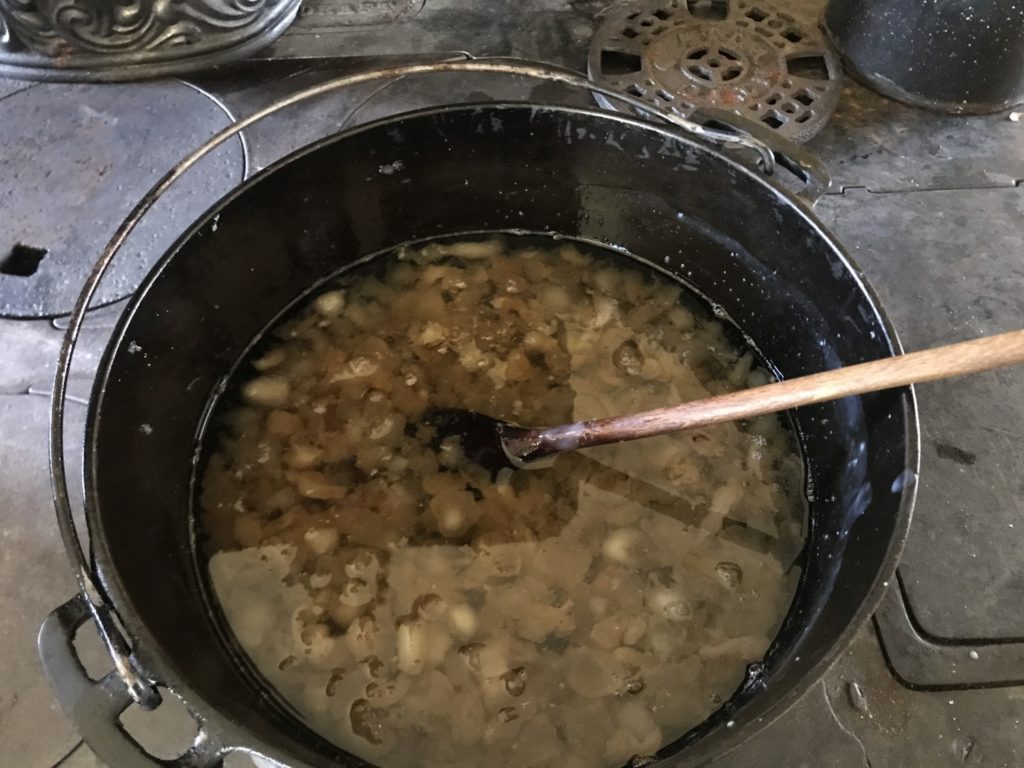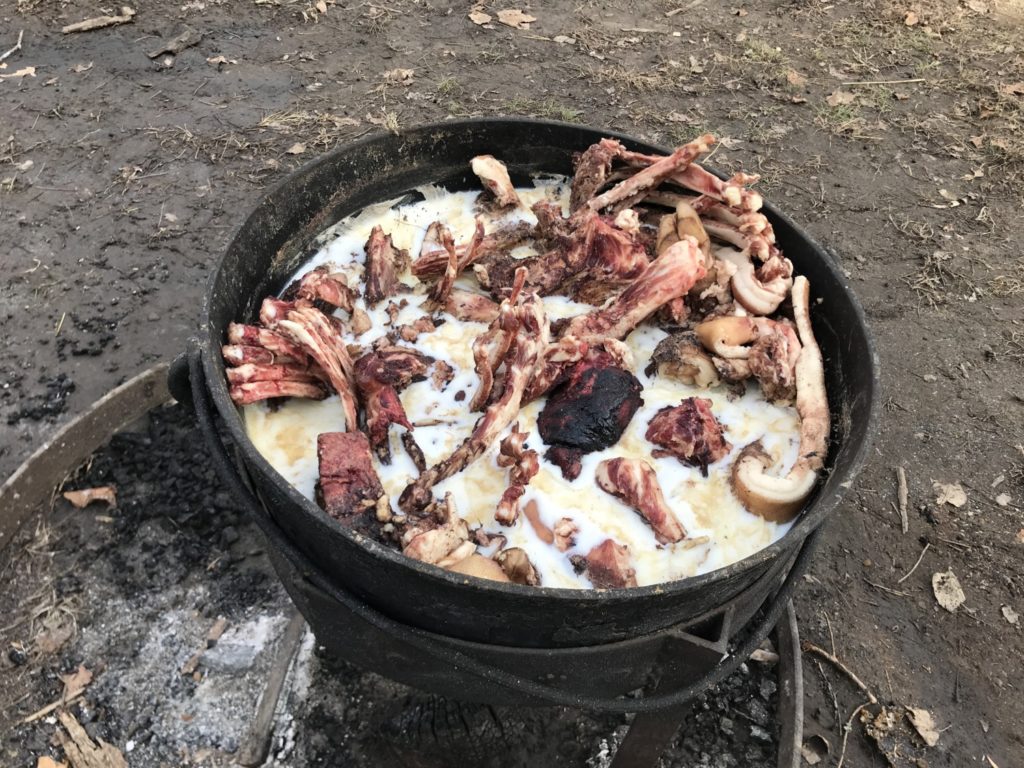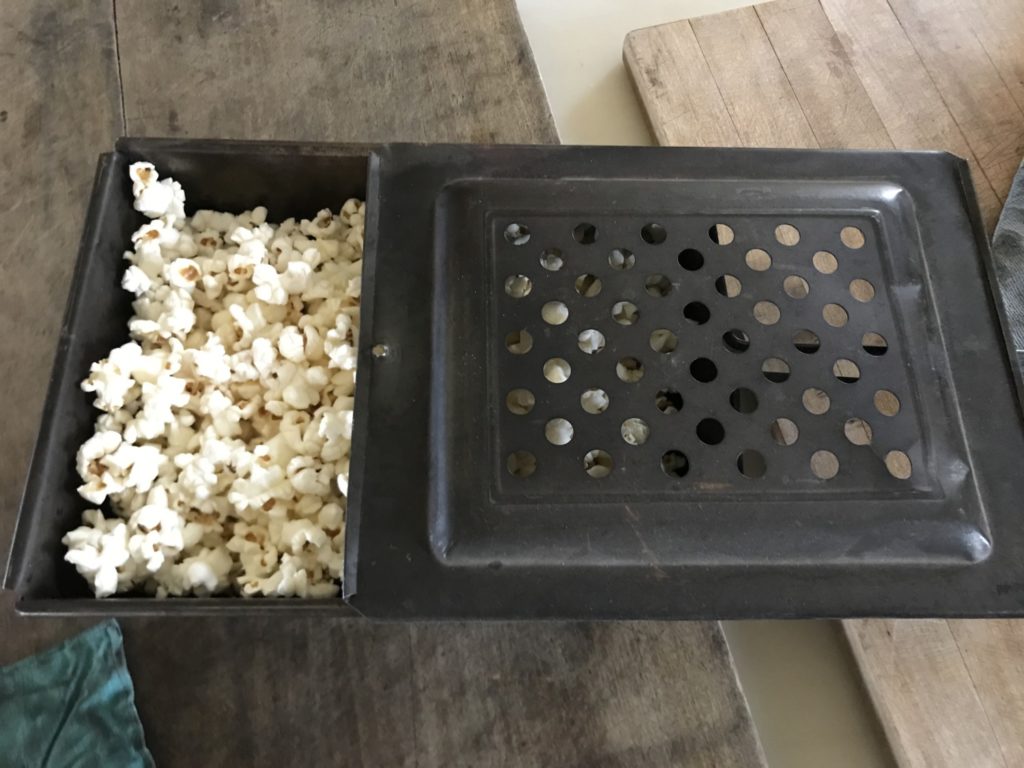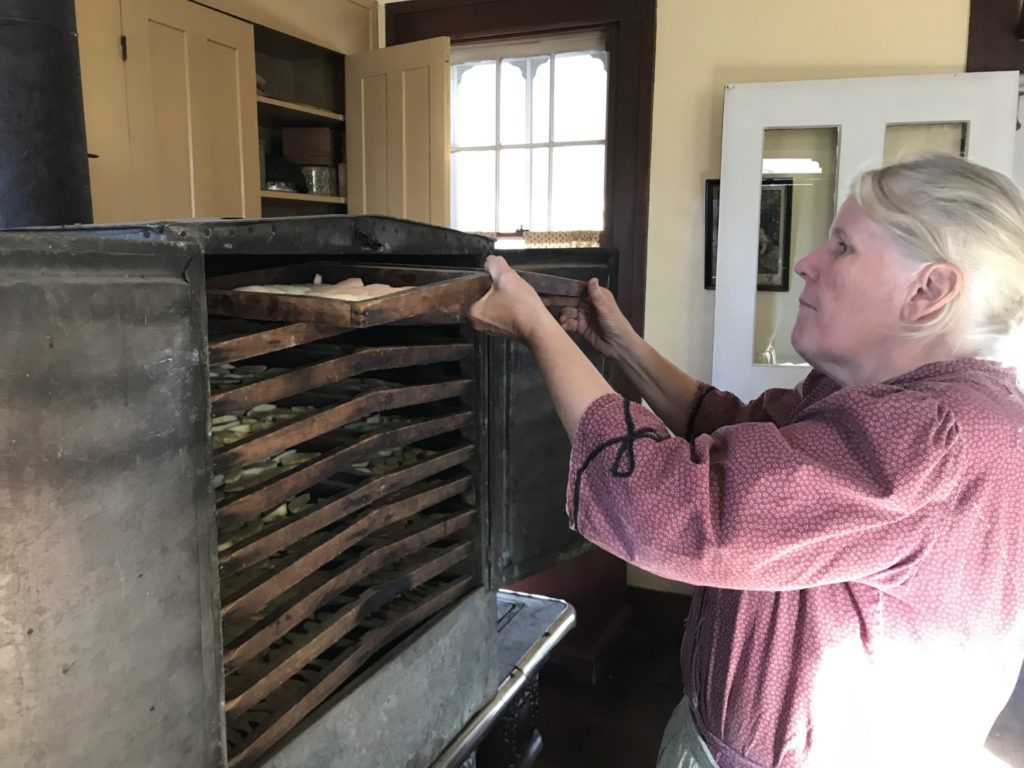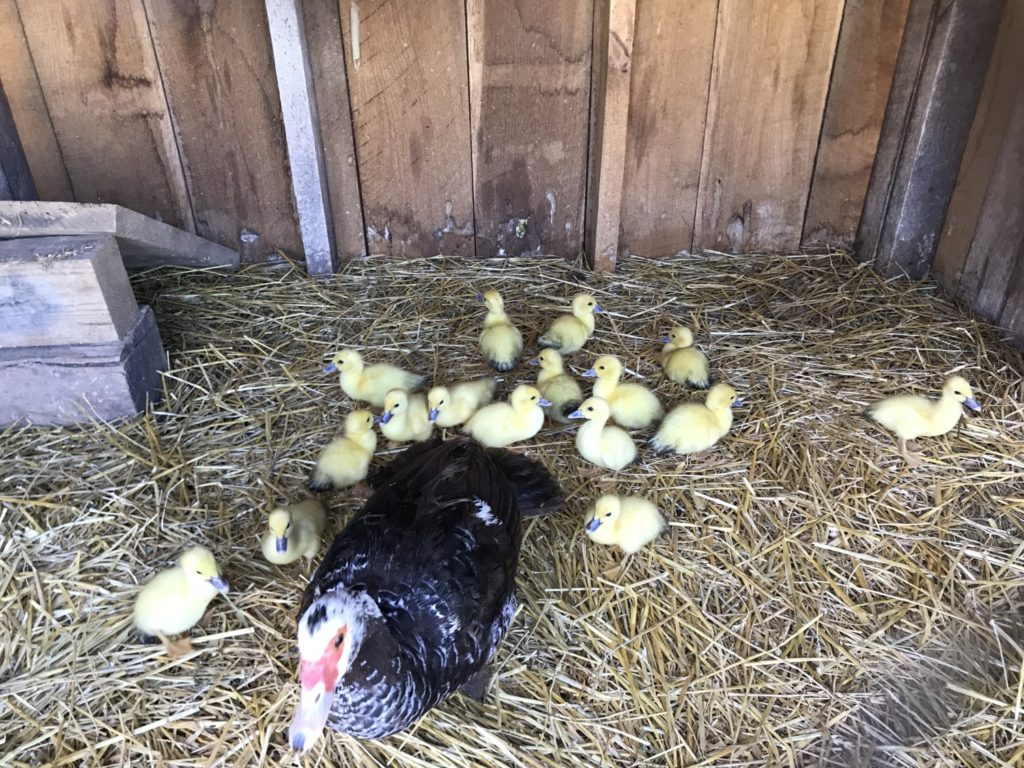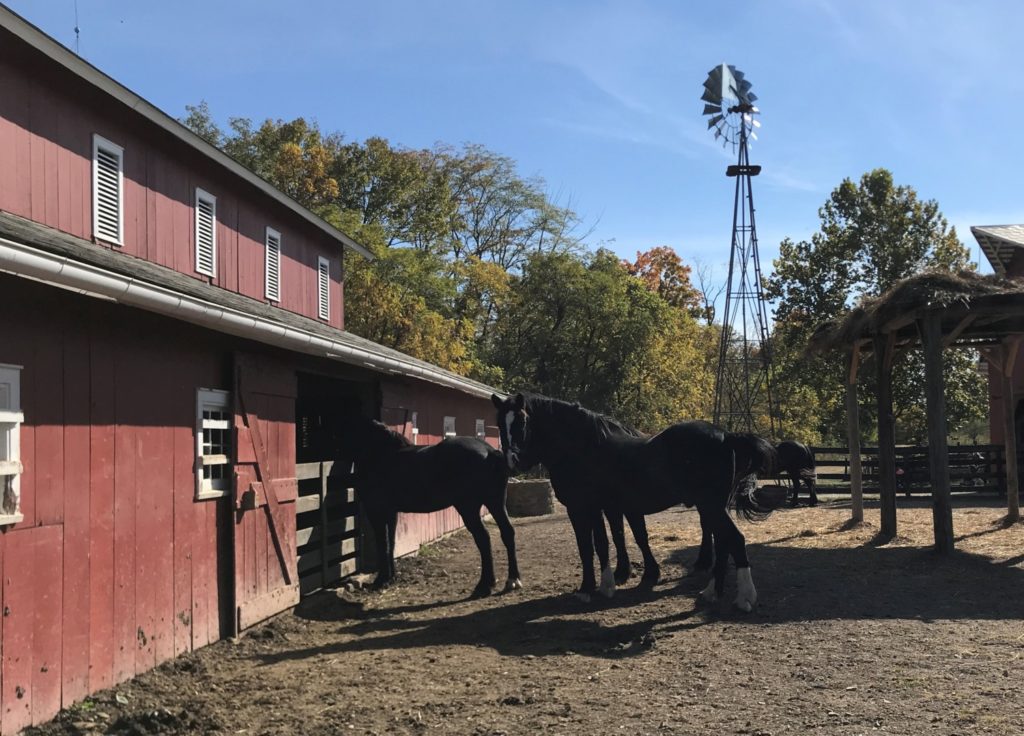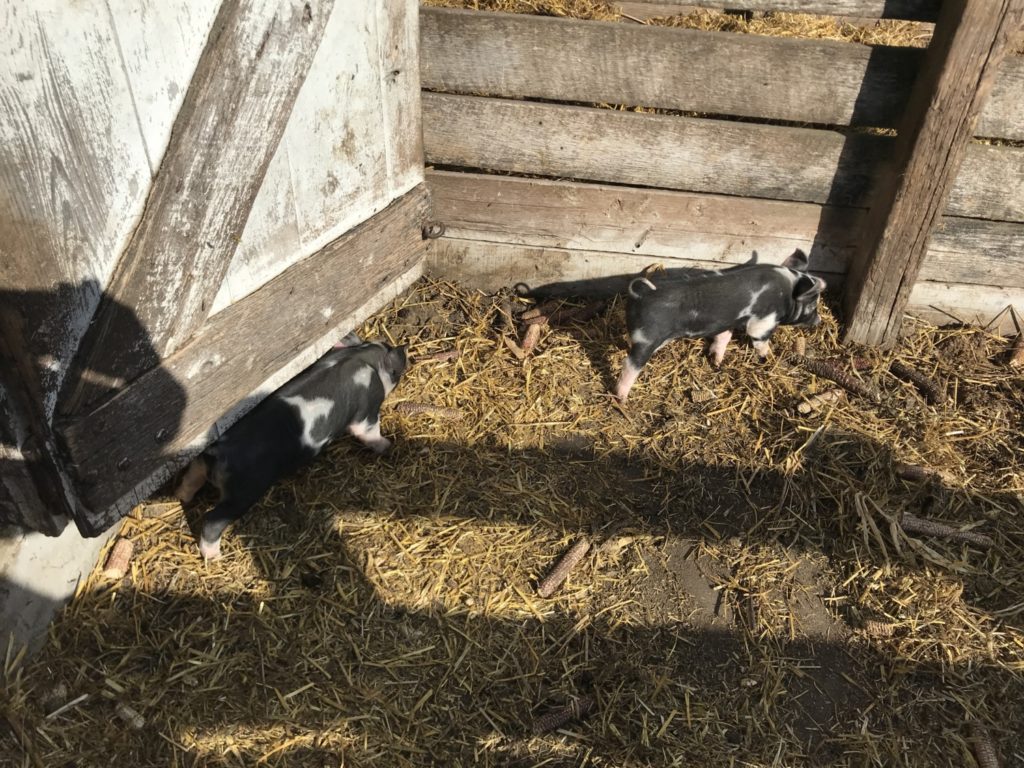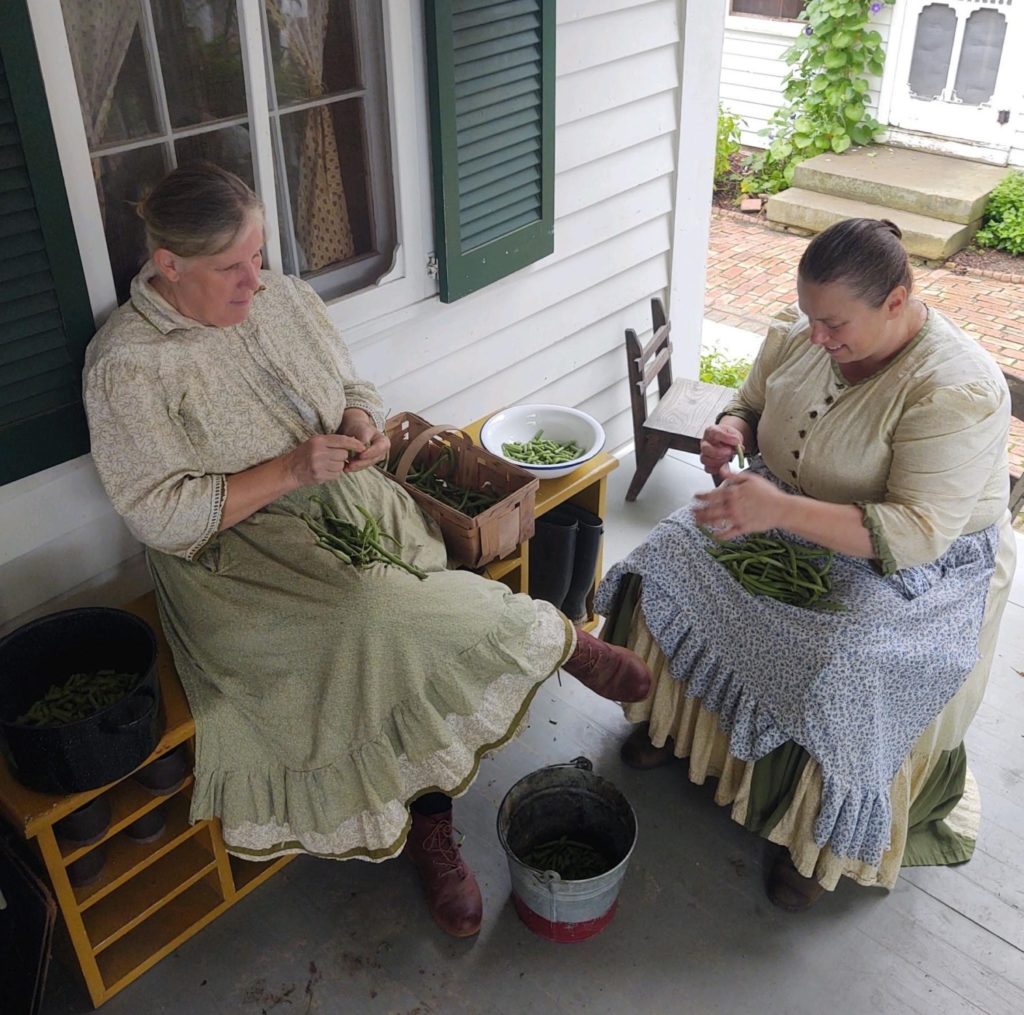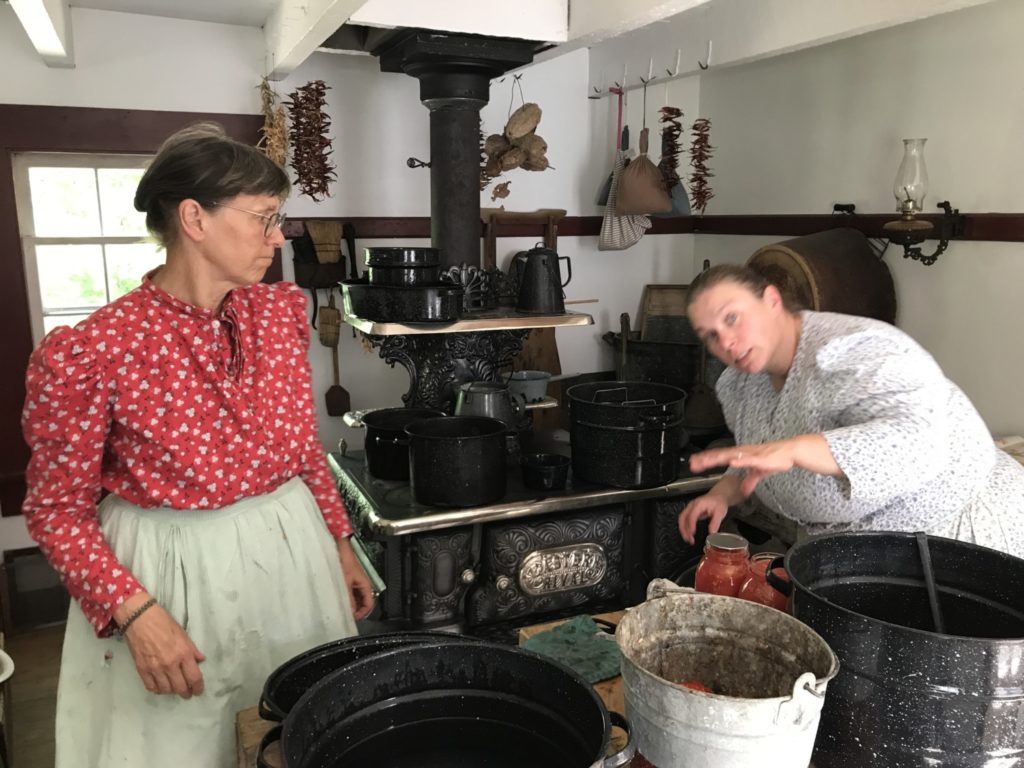Tom and I volunteered for more than 100 hours at Slate Run Living Historical Farm between July and December. It was fun and we enjoyed working on a living 1880’s farm. The staff at the farm is great and we learned a lot from them.

During our 100 hours, I learned how to use the woodstove. I baked cakes, cookies, and bread. I tended stews, prepared gravy, and stirred lard on the stove. During December I popped corn so that we could string it and use it on the Christmas tree. Eventually I even stopped burning myself on the hot knobs and latches. At the beginning of October, the woodstove was moved from the summer kitchen into the house. This gave us a chance to really clean the woodstove. The woodstove was my friend during the colder weather as it warmed up the whole farmhouse.
I even learned how to do some canning. Everything on the farm had to be preserved. We boiled apples and pears for applesauce, apple butter, and pear butter. All of these things had to be canned to be preserved. In addition we canned beans, tomatoes, pumpkin, squash, and tomato sauce. We spent hours drying apples on a big dehydrator on top of the wood stove. By the beginning of November, the garden was cleared out and the root cellar was full.
Tom learned how to take care of the animals and harvest crops. He gained an appreciation for the draft horses who were so big and powerful and yet so gentle and willing to work.
The first Saturday in December we butchered two hogs. Every part of the hog was used. We made sausage, boiled down the lard, preserved the tallow, and hung up the pork belly in the smokehouse. In the end there was over 300 pounds of meat to last the farm family through another year.
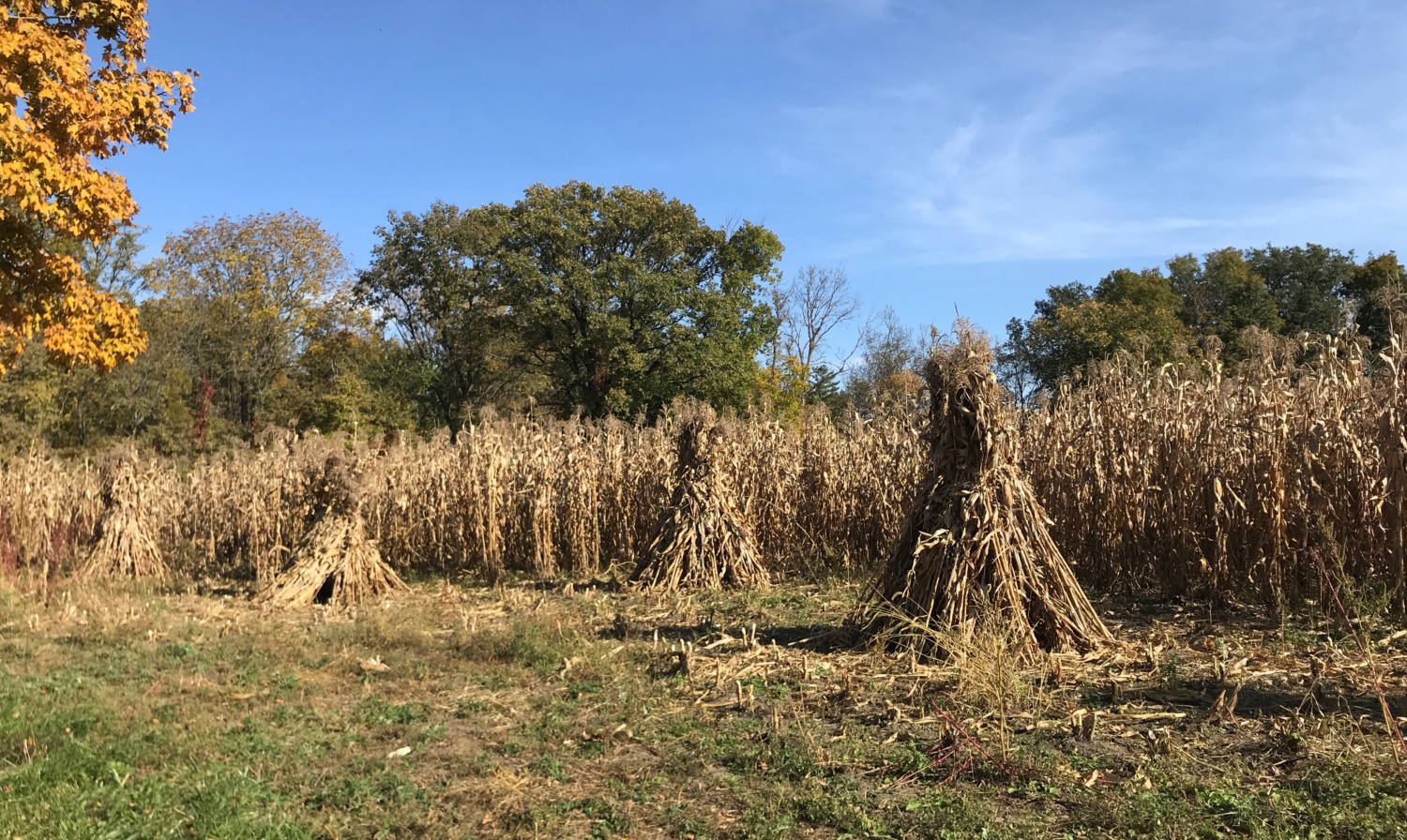
Tom’s special project was getting the field corn harvested. All of the corn, including the tall stalks, is used for feed. Tom built a corn horse that was used to create the corn shocks. Every day Tom would head out to the corn field to create more shocks or bring the harvested corn into the barn.
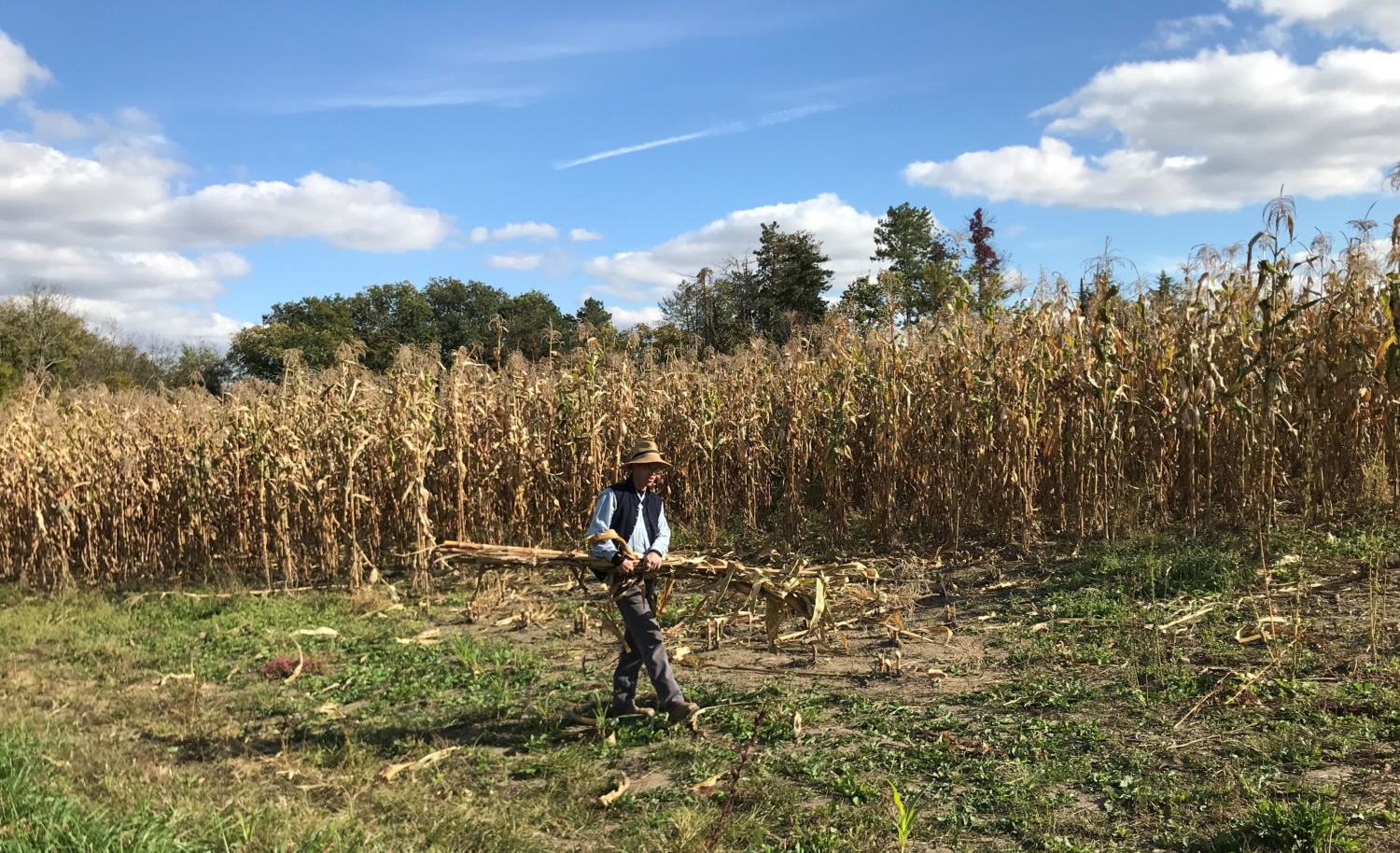
One day all of the farmers were in the cornfield and all the women were in the kitchen. I headed out to the hog pens with two buckets of pear peelings. The hogs liked to climb up on the slats of their pens and get to the buckets first. If I dropped a bucket, I had to go in to get it, so I always concentrated hard on holding on the buckets as I dumped them in the troughs.
As I finished dumping the second bucket, I noticed that there was a sheep at my elbow. As I looked around, I saw that all the sheep were in the barnyard with me, which is not where they were supposed to be. I didn’t, however, know where they were supposed to be. Were the farmers moving them into the barn? Changing their grazing field? I picked up my buckets and headed for the barn. The sheep all followed close behind me. The farmers move them from one field to another by putting feed in a bucket and the sheep thought I had feed for them.
When I got to the barn I hollered for one of the farmers, but they were all in the cornfield. I didn’t really know what to do. The ram of the flock came up to me and stood in front of me, like he was waiting for instructions. I was surprised to see him because he is usually in a pen by himself. He can be very ornery, but he was standing quietly and patiently. I petted him as I tried to decide my next move. I couldn’t cross the bridge to the farmhouse without all the sheep following me. Finally I got the attention of a family that was getting ready to cross the bridge. I asked one of the girls in the family to run back to the kitchen and tell the women that the sheep were loose.
It wasn’t long before Natelle and Donna came flying out of the kitchen, running across the bridge. Clarissa ran to tell the farmers. As soon as Natelle saw the ram, she made our visitors move to the other side of the bridge. Then she suggested I leave the buckets and head back to the kitchen to stir the pear butter. She and Donna remained to gather the sheep. As I headed over the bridge, Harmon came sprinting around the side of the house. Harmon is tall and usually moves pretty slowly. I had never seen him run, much less sprint at that speed. Tom came running along behind him while Eric came more slowly with the horses and wagon. It didn’t take everyone long to get the sheep back in correct field. The latch on the gate had broken and the sheep took advantage of it.
Another day we were working in the kitchen and heard some explosions. When I went outside, I could see a column of black smoke rising over the trees in the woods around the farm. Tom saw it too, and decided to investigate. He found a guy standing on the side of the road a little way from a burning truck. The guy had already called 911 so Tom kept him company while they waited for the fire trucks to show up. The explosions were the tires blowing on the burning truck. Natelle kept an anxious eye out until Tom came back. The staff are responsible if anything happens to volunteers.
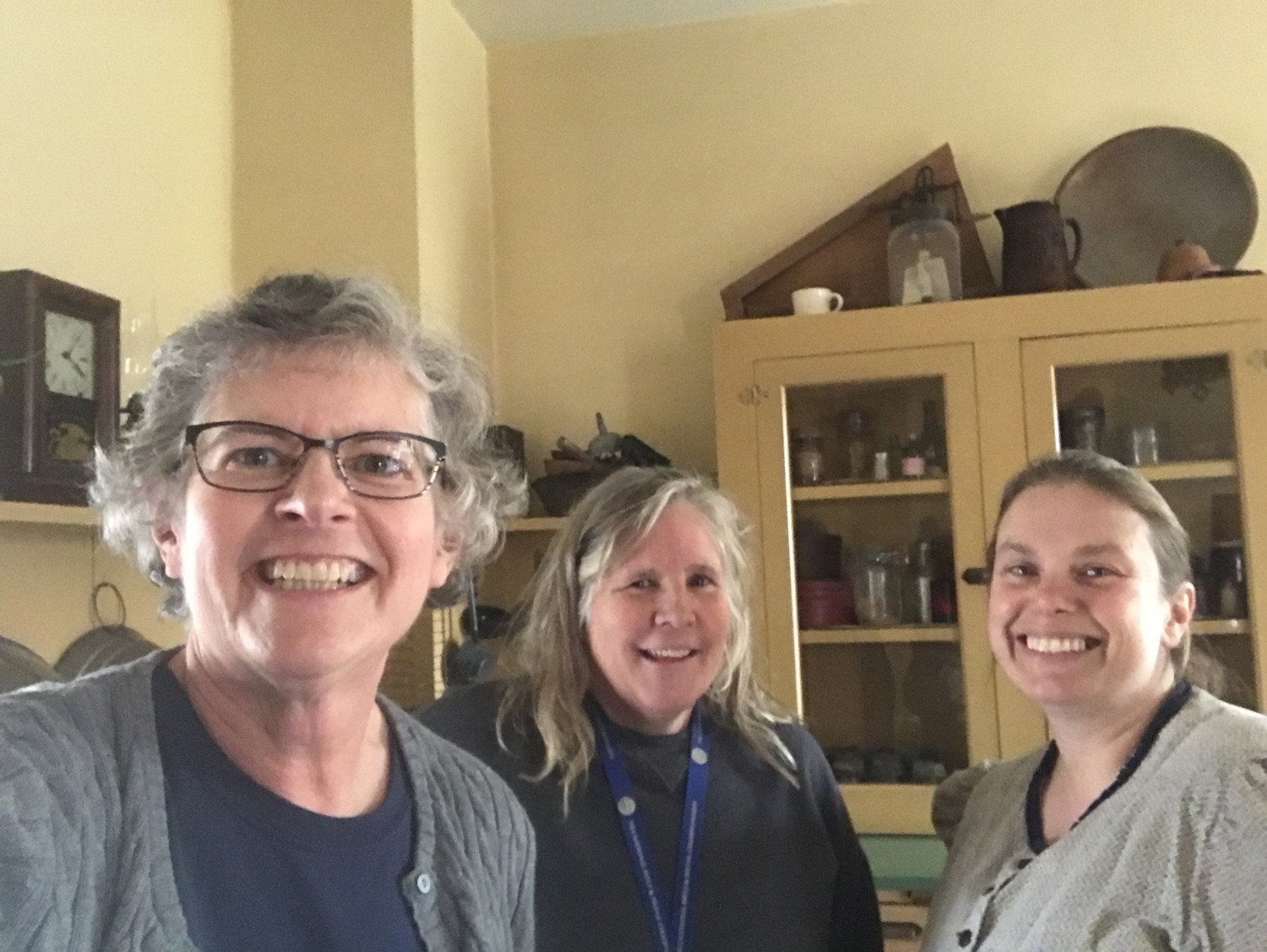
Tom and I reluctantly turned in our living history clothes in the middle of December. The staff gave us a very nice thank you card and a jar of the apple butter I helped make. We enjoyed volunteering our 100 hours at the farm and we were sorry to leave. All the staff let us know that we were welcome to return anytime. Maybe we will.

